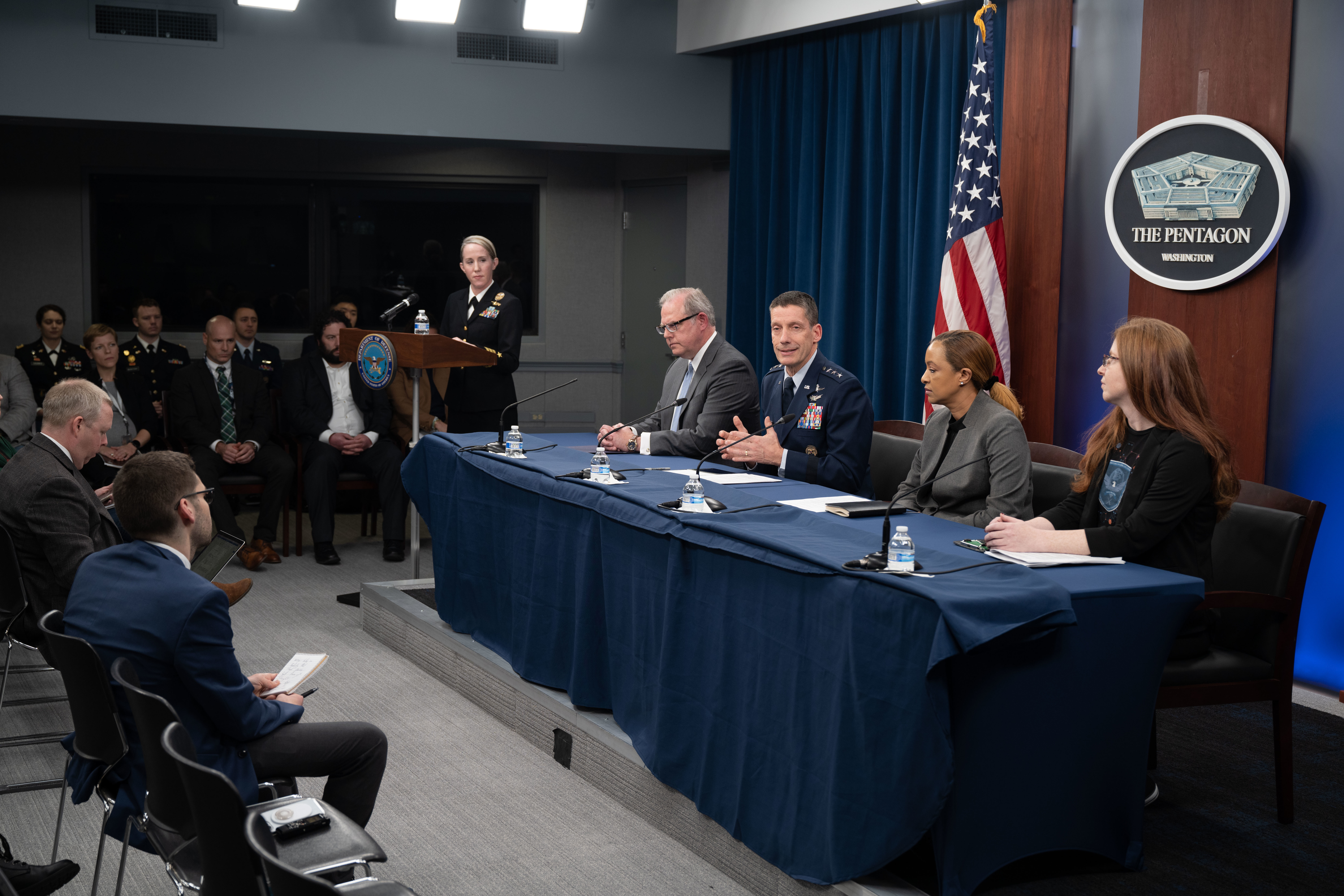The Department of Defense announced a contract for future cloud services Dec. 7. The effort, Joint Warfighting Cloud Capability (JWCC), will serve as a pillar of the U.S. military’s future operations, with a top line of $9 billion. It will provide the DOD with enterprise, global cloud services across all security and classification levels.
“This is a huge day for the department and what we can bring to our warfighters, particularly for areas like joint all-domain command and control, JADC2,” John Sherman, the DOD’s chief information officer, told reporters at the Pentagon on Dec. 8, referring to the U.S. military’s concept of more connected sensors and shooters. “We’ve talked about being able to provide that undergirding of the cloud computing that’s going to be there for the combatant commands and many others.”
The contracts for JWCC were awarded to Google, Oracle, Amazon Web Services, and Microsoft. The Pentagon originally had a vision for a single cloud-service provider under the Joint Enterprise Defense Infrastructure (JEDI) program, which faced legal challenges over the contract and was ultimately canceled.
The JWCC contract awards run through 2028 and are worth up to $9 billion altogether. However, each vendor is only guaranteed $100,000 and will have to compete for task orders, the DOD’s cyber leaders said.
The DOD’s top cyber officials said having cloud services for many of its capabilities will enable coordination and data sharing on a level that is currently impossible. But they acknowledged that individual services can be territorial and the DOD will need a broad cultural shift to move toward integrated operations and a shift to more shared technology.
“As we move towards an enterprise framework here, which is really what JADC2 is about, and why having JWCC now is so critical to be that binding element here, that compute capability that really spans the entire enterprise, which we haven’t had before—that is a bit of a cultural shift,” Sherman said. “This is a journey to get there to work with our military department colleagues, the combatant commands, the defense agencies, and field activities to lead the cultural piece of this.”
Services are also not used to being forced to share one platform. For example, during recent exercises at Project Convergence, an Army-led exercise to experiment with elements of JADC2, the Army and the Air Force learned that their assets had trouble communicating in an automated way. They thought that might happen because the Army and Air Force did not originally design their assets to talk to each other.
“We’re going to have to be joint, integrated, and we can’t miss a step or time,” said Lily Zeleke, the acting deputy chief information officer for the information enterprise. “What JWCC buys us is speed, scale, security.”
From Zeleke’s point of view, the DOD needs to field the cloud capabilities and then improve its systems.
“This is it,” Zeleke said. “We’re going to have to have the diversity of cloud capabilities and the providers and the technology. As it evolves, it’s going to have to give us—[and] we’re going to have to be able to do—monitoring of the whole environment. We’re going to have to be able to do automation.”
The U.S.’s “pacing” challenge of China, and what the DOD sees as the Chinese military’s desire to disrupt America’s capabilities in a conflict, drives the need to move toward a more modern system for DOD-wide communications, the department’s cyber leaders reiterated during the news conference.
“Where we’re heading, in the environment we’re in, is going to drive us to using JWCC,” Zeleke said.
